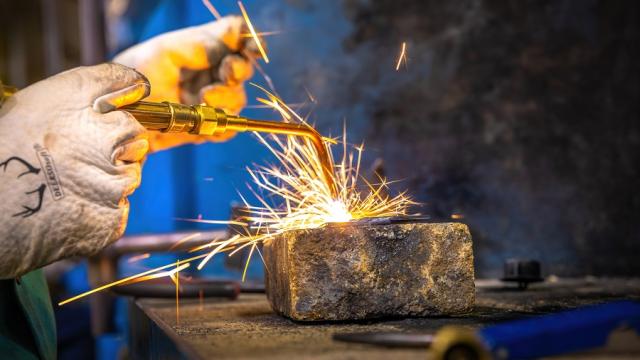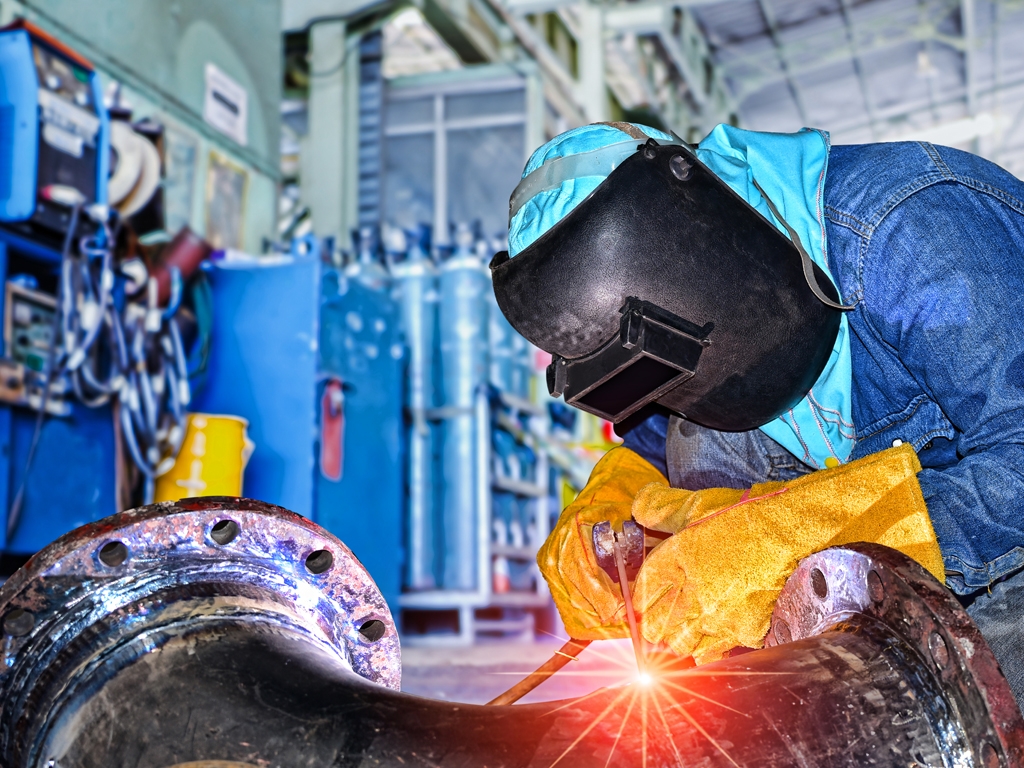Prevent welding failures with guidance by Montana Mobile Welding and Repair Belgrade Fabrication
Wiki Article
Common Welding Fixing Issues and How to Address Them Successfully
Welding repair services frequently encounter an array of issues that can jeopardize the stability of the end product. Common problems include poor penetration, porosity, and imbalance, to name a few. Each flaw presents unique challenges that need certain strategies for resolution. Recognizing these concerns is crucial for welders intending to improve their end results and skills. This conversation will certainly check out these usual welding repair service concerns and efficient techniques to address them.Insufficient Infiltration
Insufficient penetration takes place when the weld steel stops working to completely fuse with the base product, causing weak joints and possible structural failings. This concern usually stems from insufficient warmth input, wrong electrode angle, or improper welding speed. Welders may run into insufficient infiltration because of a miscalculation of the required criteria for a specific material density or type. Additionally, contamination on the base material's surface area can impede efficient bonding, aggravating the problem. To attend to inadequate infiltration, welders ought to assure proper settings on their devices and maintain a clean work surface. Normal assessment of welds is advised to identify any kind of shortages early, permitting prompt improvements and the prevention of endangered architectural stability in welded settings up.Porosity
Porosity is an usual defect in welded joints that materializes as little gas bubbles caught within the weld metal. This issue can compromise the integrity of the weld, leading to decreased toughness and potential failure under stress and anxiety. Belgrade Fabrication. Porosity typically occurs from contamination, wetness, or inappropriate welding methods, which permit gases to leave into the liquified weld swimming pool. To address porosity, welders must guarantee correct surface prep work, keep a tidy workplace, and utilize suitable welding specifications. In addition, choosing the ideal filler product and protecting gas can mitigate gas entrapment. Normal evaluation and screening of welds can help identify porosity early, ensuring prompt rehabilitative activities are taken, therefore preserving the top quality and reliability of the welded structureMisalignment
Imbalance in welding can occur from numerous aspects, consisting of inappropriate configuration and thermal expansion. Understanding the origin is essential for effective resolution. Numerous improvement strategies are readily available to realign parts and assure structural honesty.Root causes of Imbalance
Welding misalignment typically stems from a range of underlying issues that can compromise architectural stability. One main reason is improper fit-up of parts prior to welding, which can lead to voids and irregular surface areas. Variants in thermal development throughout the welding procedure can also result in distortion, particularly if the products being signed up with have various coefficients of growth. In addition, insufficient fixturing and clamping might stop working to hold elements firmly in position, bring about movement throughout welding. Badly kept tools, including welding machines and devices, might introduce disparities in the weld bead, additional contributing to imbalance. Driver error, stemming from inadequate training or experience, can also play a substantial duty in developing misaligned welds.
Improvement Methods Readily Available
Resolving imbalance properly needs a combination of rehabilitative techniques customized to the certain issues handy. One usual technique is making use of components or jigs to hold components in the right setting throughout welding, ensuring regular positioning. Additionally, preheating the materials can aid minimize distortion and boost fit-up. For considerable imbalance, mechanical realignment methods, such as utilizing hydraulic jacks or clamps, can be utilized to deal with the setting before welding. Post-weld warm therapy may also be essential to eliminate tensions brought on by misalignment. Ultimately, careful assessment and change during the setup phase can avoid misalignment concerns from becoming substantial troubles, advertising a smoother welding procedure and enhancing general structural stability.Distortion
Distortion is an usual obstacle in welding that can arise from numerous factors, including unequal home heating and air conditioning. Recognizing the sources of distortion is essential for executing effective avoidance strategies. Addressing this issue not just boosts structural integrity but likewise boosts the overall top quality of the weld.Reasons for Distortion
When based on the intense warmth of welding, products often undergo adjustments that can result in distortion. This phenomenon mostly emerges from thermal development and contraction throughout the welding process. As the weld location warms up, the product broadens; upon cooling, it gets, which can create interior tensions. Additionally, unequal home heating across a workpiece can intensify these tensions, causing bending or flexing. The sort of material additionally plays a significant function; metals with varying thermal conductivity and coefficients of development might respond differently, causing unpredictable distortions. Moreover, inadequate joint design and insufficient fixturing can add to imbalance throughout welding, raising the possibility of distortion. Comprehending these causes is essential for reliable welding repair work and prevention approaches.Avoidance Techniques
Effective prevention techniques for distortion during welding focus on managing heat input and guaranteeing proper joint layout. Maintaining a constant warm input assists to lessen thermal growth and tightening, which can result in distortion. Using techniques such as pre-heating the workpiece can additionally lower the temperature gradient, promoting consistent heating. In addition, picking proper joint styles, such as T-joints or lap joints, can boost security and minimize tension concentrations. Applying proper fixturing to protect the work surfaces in position better help in preserving positioning throughout the welding procedure. Lastly, staggered welding sequences can click here for more distribute warm much more equally, preventing localized distortion. By applying these strategies, welders can greatly reduce the possibility of distortion and boost the total quality of their welds.Cracking
Fracturing is a common issue come across in welding repair work, typically arising from numerous variables such as incorrect cooling prices, material selection, or insufficient joint prep work. The occurrence of cracks can substantially endanger the integrity of the weld, leading to prospective failures during procedure. To resolve this concern, welders should first examine the origin, making sure that products work and appropriately picked for the certain application. In addition, regulating the air conditioning price throughout the welding process is essential; fast air conditioning can generate tension and result in breaking. Proper joint layout and prep work additionally add to reducing the risk. Applying these strategies can boost weld top quality and sturdiness, inevitably lowering the probability of splitting in completed weldments.
Incomplete Fusion
A significant concern in welding repair work is insufficient combination, which happens when the weld metal does not effectively bond with the base product or previous weld passes - Montana Mobile Welding and Repair Welding. This defect can bring about weaknesses in the joint, possibly jeopardizing the stability of the welded framework. Factors adding to insufficient combination include inadequate warm input, inappropriate welding method, and contamination of the surface areas being signed up with. To address this problem efficiently, welders need to assure appropriate pre-weld cleaning and surface preparation, as well as readjust their welding criteria to accomplish sufficient infiltration and fusion. Normal assessment throughout the welding process can additionally assist determine incomplete combination early, permitting for timely restorative actions to improve the general top quality of the weldOverheating
While welding repair services can enhance architectural integrity, overheating offers a substantial difficulty that can result in material destruction. Extreme heat throughout welding can change the mechanical homes of metals, leading to reduced strength, enhanced brittleness, and bending. This phenomenon is specifically vital in high-stress applications where structural integrity is vital. Recognizing getting too hot can include visual inspections for staining or distortion, along with checking temperature level during the welding process. To mitigate the risks related to overheating, welders should use appropriate strategies, such as regulating warm input, adjusting travel speed, and making use of suitable filler products. In addition, Homepage applying pre- and post-weld warm treatments can aid restore material homes and improve the total top quality of the repair, making certain long-lasting efficiency and safety.Regularly Asked Inquiries
What Are the Common Signs of a Welding Issue?

Just How Can I Test My Welds for Quality?
To evaluate welds for high quality, one can use aesthetic assessments, ultrasonic screening, and radiographic approaches. Each strategy guarantees architectural integrity, identifies defects, and verifies adherence to defined criteria, ultimately improving the dependability of the welded joints.What Safety Preventative Measures Should I Take While Welding?
When welding, one should prioritize security by putting on suitable individual protective tools, ensuring appropriate air flow, protecting combustible products away, keeping a tidy work space, and understanding environments to avoid crashes and injuries.Can I Repair a Weld Without Remodeling the Entire Joint?
Fixing a weld without renovating the entire joint is feasible, relying on the damage (Fabrication). Techniques such as grinding, including filler material, or making use of a welding process can effectively deal with specific problems while preserving the bordering structureWhat Devices Are Essential for Efficient Welding Repair Works?
Important tools for effective welding fixings consist of a welding machine, wire brush, mill, protective equipment, clamps, and filler materials. Each tool plays a crucial role in guaranteeing quality and safety during the repair work process. Porosity generally occurs from contamination, dampness, or incorrect welding techniques, which enable gases to run away right into the molten weld swimming pool. Improperly conserved equipment, consisting of welding machines and devices, might present disparities in the weld bead, more adding to misalignment. When subjected to the intense warmth of welding, products often undertake changes that can lead to distortion. Cracking is a typical issue experienced in welding fixings, frequently resulting browse around here from various elements such as incorrect air conditioning rates, material option, or insufficient joint prep work. A substantial problem in welding repair services is insufficient blend, which takes place when the weld metal does not properly bond with the base product or previous weld passes.Report this wiki page